For our generation, this was long the world’s fastest car we knew of in our childhood: the record-holder from 1970 to 1983, the Blue Flame, clocking 1002 km/h. Not to be confused with a paraffin stove. I’ve finally got my hands on a model of this coveted vehicle.
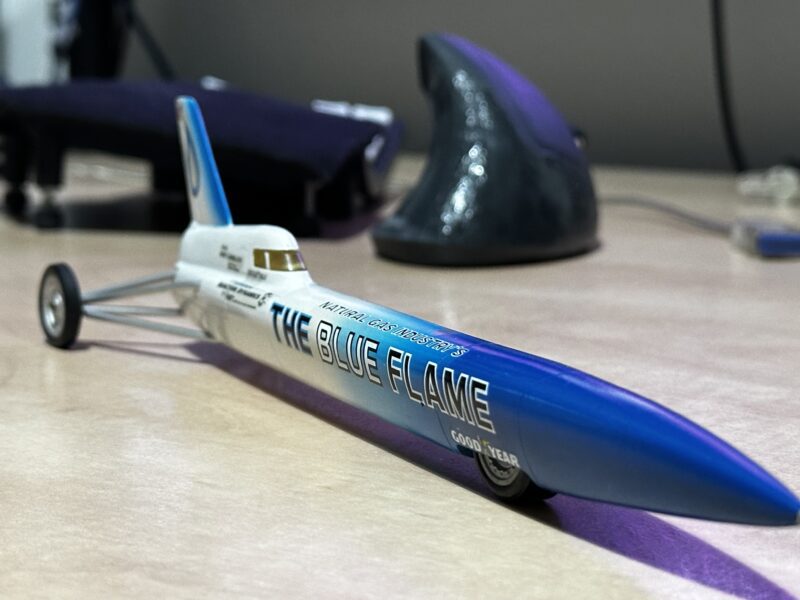
In spring 2024, I had the opportunity to see the actual vehicle when visiting the Sinsheim Museum in Germany. It is an enormous machine, measuring a full 11.6 metres in length.
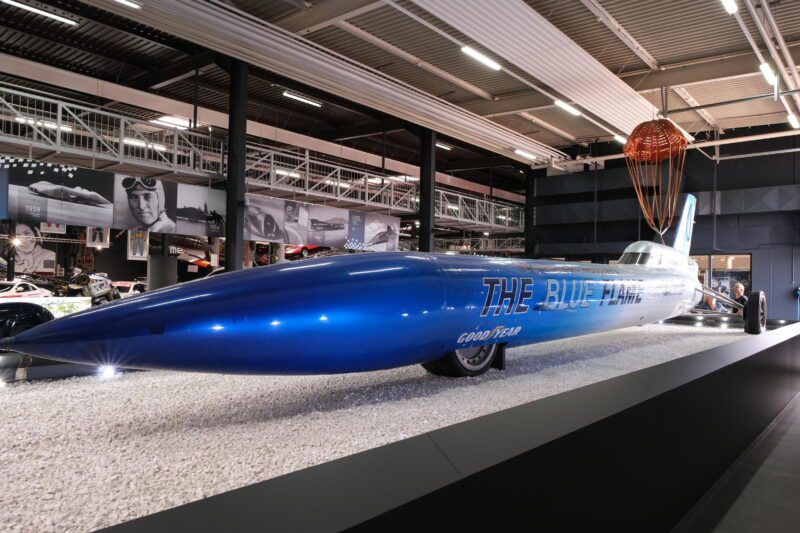
The record of 622mph displayed on the vehicle body appears to be the average speed over the fastest one-mile section, while the 630mph shown on the panel in front is the average speed over the subsequent one-kilometre section. This was achieved on 23 October 1970 at the Bonneville Salt Flats in Utah. The peak speed was approximately 650mph.
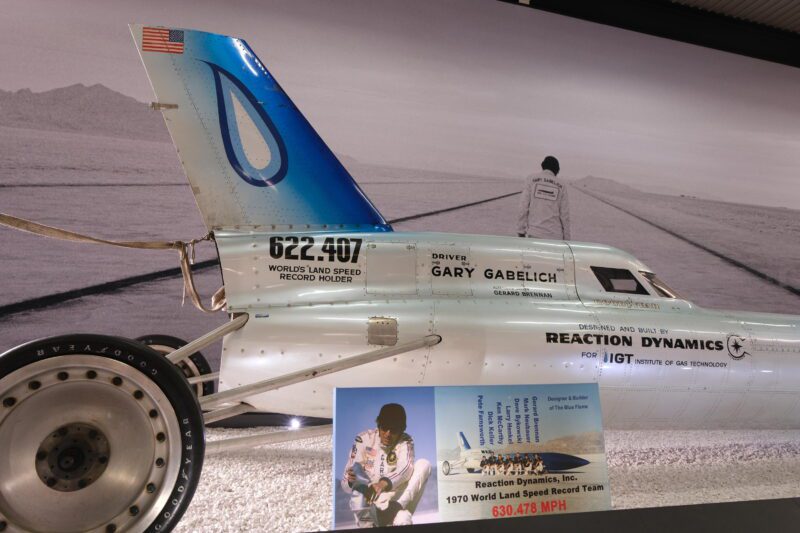
This is a 1/43 scale model car. While the body shape is good, the problem is that the cockpit section bulges too much, creating a line that slopes upwards at the front. I had quite a struggle finding it and acquiring it, so modifying it feels a bit too risky and I’m hesitating. It’s also a shame that the window glass has yellowed, being an older model.
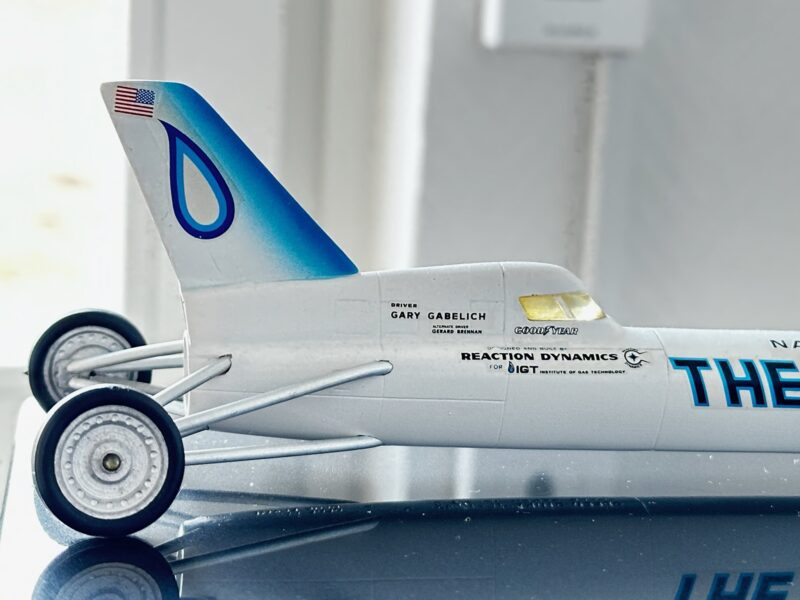
The propulsion is provided by rocket engines, not jets. Although the maximum output was equivalent to 58,000 horsepower, enabling even greater speeds, tyre manufacturer Goodyear imposed a restriction preventing speeds exceeding 1,100 kilometres per hour. Subsequent speed record vehicles abandoned rubber tyres (such as Thrust II). A stopping parachute is deployed from above the rocket nozzle.

The mini car is rather simplistic in its construction around here, making one rather tempted to tinker with it. Perhaps I’ll at least give it a coat of paint.
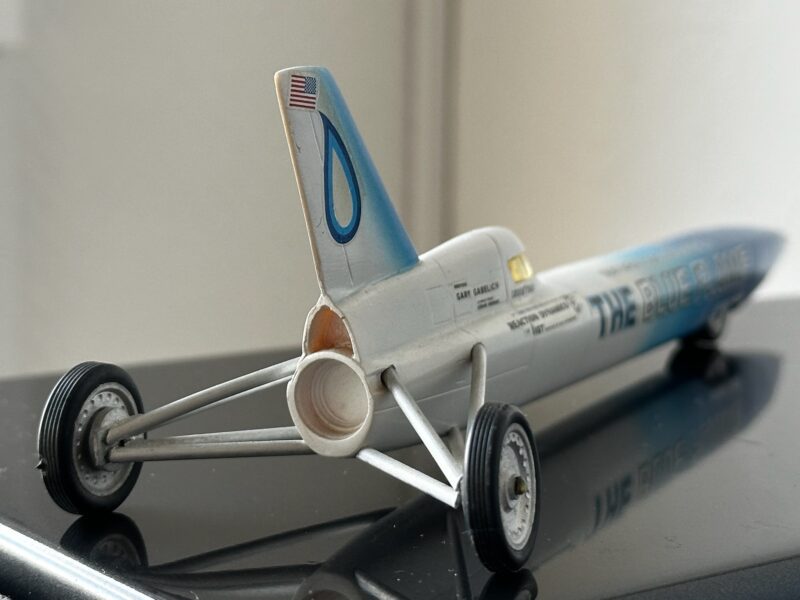
Incidentally, when I acquired this miniature car, it was in this rather poor condition, a real shame.
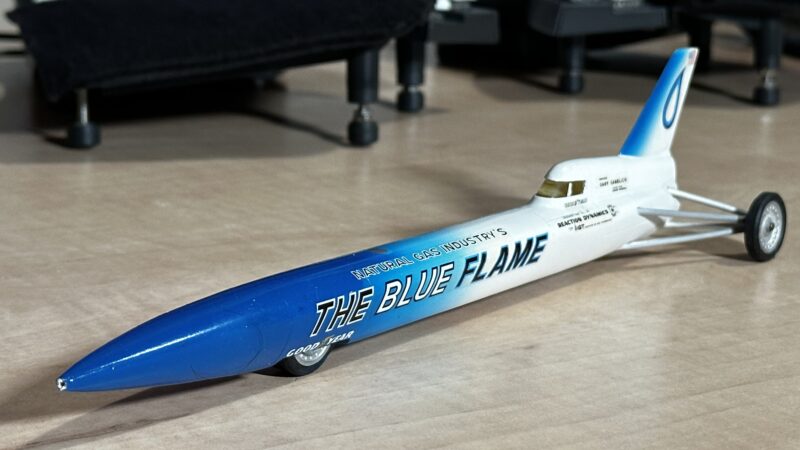
A 1mm plastic rod was clamped into a rotary tool and rotated, then sharpened into a pitot tube by filing it down like on a lathe before being glued in place. Please excuse the imperfect colour match when repainting the blue sections.



Comment